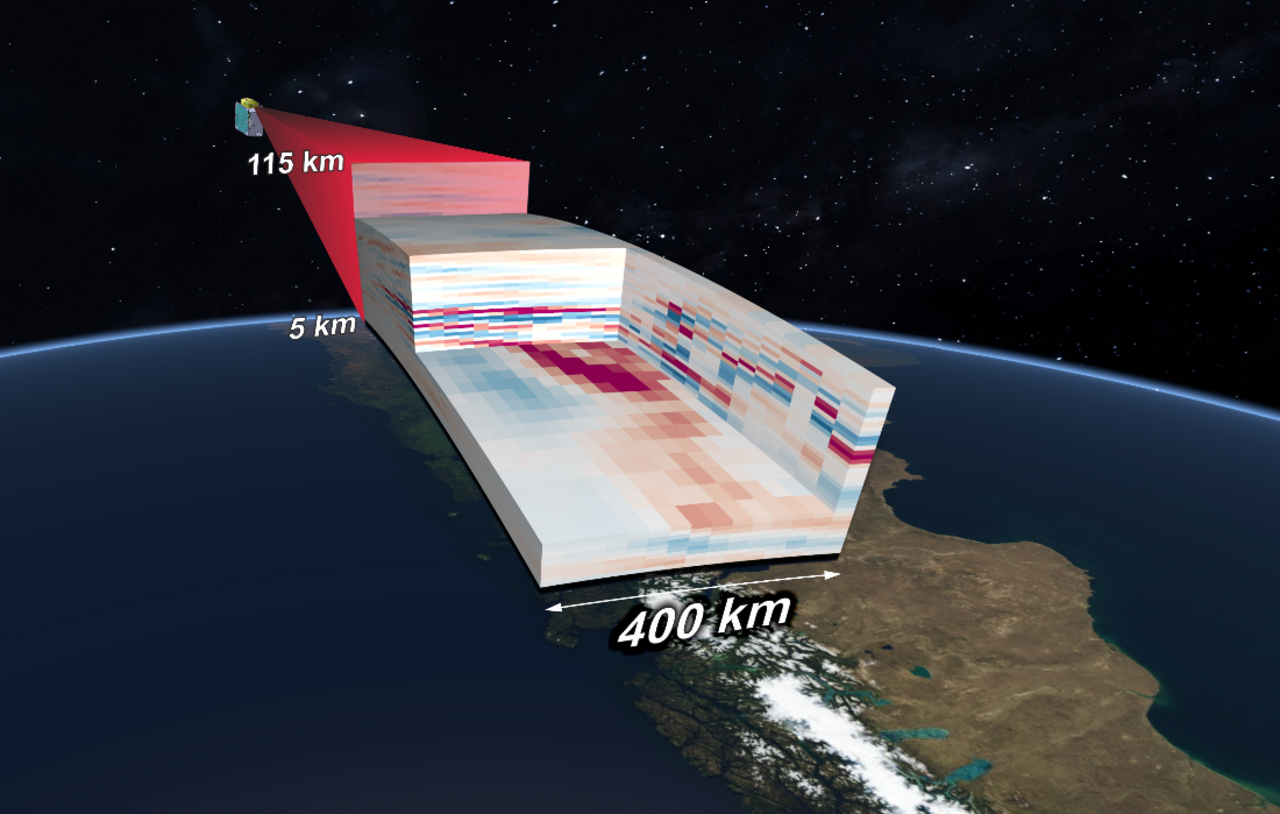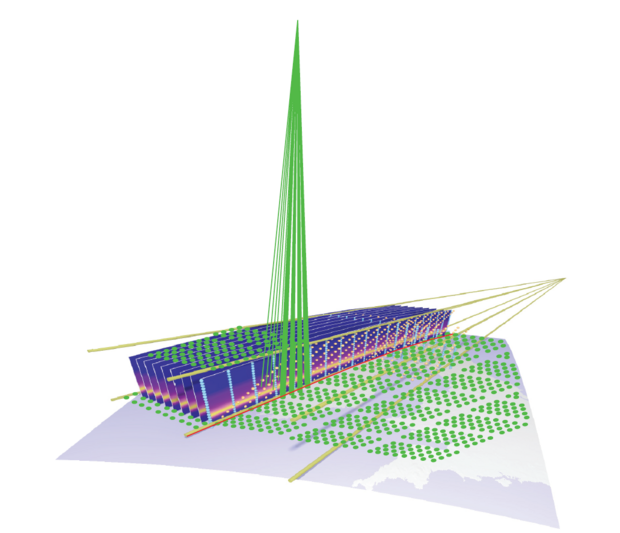The Technology
©NASA
Imaging Infra-red Spectroscopy
CAIRT will be the first limb-sounder with imaging Fourier-transform infrared technology in space. CAIRT will measure limb radiances from 5 to 115 km altitude with a nominal horizontal sampling of about 50 by 50 km (possible subsampling for selected science targets) and a vertical sampling of 1 km. The wavelength range will cover 720 cm-1 to 2200 cm-1 (4.5 µm to 14 µm) with a spectral resolution targeting 0.1 cm-1. With a targeted across-track coverage of 300-500 km, near-global coverage is achieved within about two days. Tomographic retrievals will provide temperature and trace gas profiles at a much higher horizontal resolution and coverage than achieved from space so far, enabling us to address new science questions.

A sketch how CAIRT will observe fine scale atmospheric structures through tomography by infra-red limb imaging. Example of a gravity wave field over South America.

CAIRT is intended to fly in loose formation with the Second Generation Meteorological Operational Satellite (MetOp-SG-A) to enable combined retrievals with observations by the New Generation Infrared Atmospheric Sounding Interferometer (IASI-NG), as well as from the other nadir sounders, resulting in consistent atmospheric profile information from the surface to the lower thermosphere. To enable simultaneous sounding of the same air masses from both limb and nadir, a phase difference of approximately 27.5° degrees between the two spacecraft is required.

